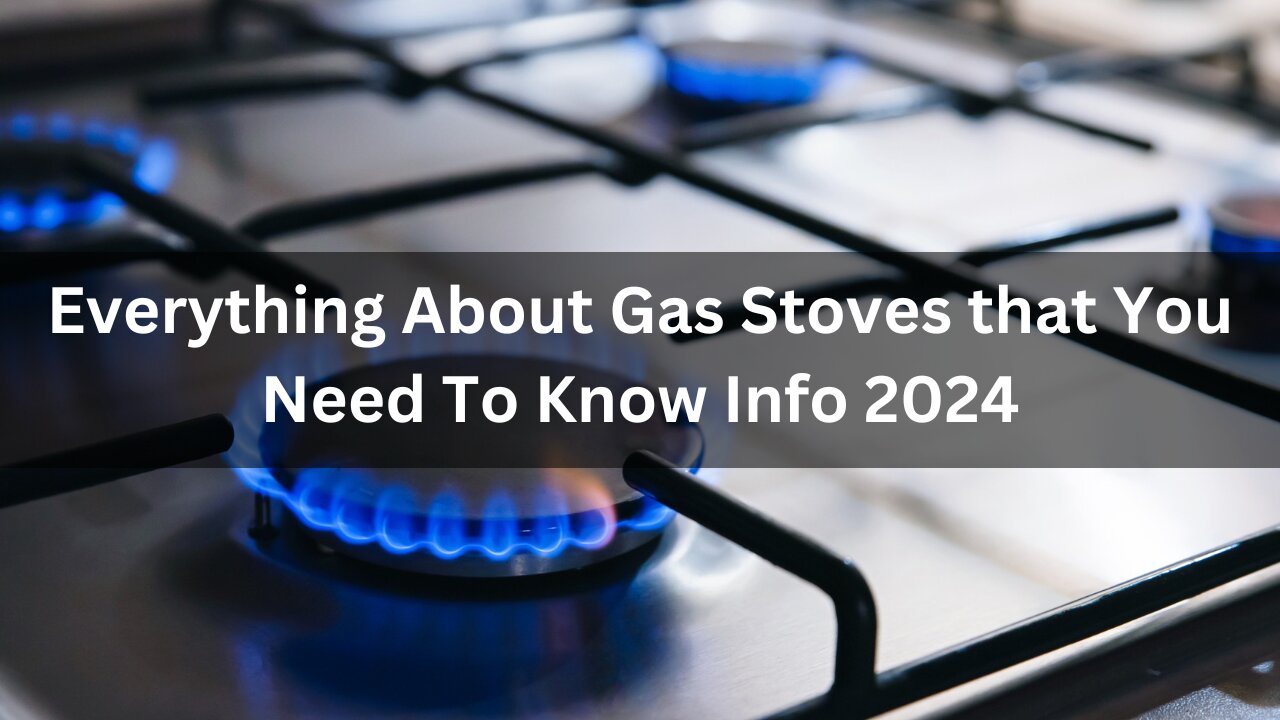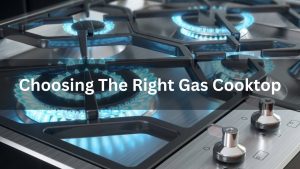In 2024, gas stoves continue to be essential in many kitchens, yet they face increased scrutiny amid growing health and environmental concerns. As technological advancements emerge, the question arises: Are gas stoves still the best choice for modern cooking? This guide explores the enduring appeal of gas stoves alongside their electric counterparts, examining how they fit into contemporary culinary creativity.
We’ll delve into the mechanics, benefits, drawbacks, and evolving regulations surrounding gas stoves. Whether you’re a seasoned chef or a curious homeowner contemplating a switch, this exploration will reveal important insights into the role of gas stoves in today’s fast-paced cooking landscape. Join us as we uncover the truths and trends that are shaping the future of this kitchen staple.
Table of Contents
How Gas Stoves Work
Gas stoves function by utilizing various components to generate and control heat. Key elements include burners, an ignition system, control knobs, and a gas supply line. Burners feature small holes that release gas, mixing it with air to create a controlled flame when ignited. There are three main types of ignition systems:
- Standing Pilot Lights: A continuous flame that ignites gas when the stove is activated.
- Electronic Ignition: Generates a spark to ignite gas as the control knob is turned.
- Continuous Ignition: Maintains the flame even if briefly extinguished for added safety.
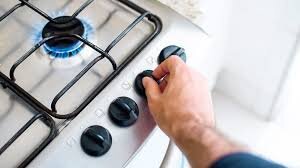
Additionally, gas stoves often have an airtight glass door or panel to seal in heat, reducing energy waste and ensuring efficient cooking. Heat radiates through the glass, while any waste air is vented out, maintaining efficiency and safety.
The lighting process can produce a “pop” sound due to slight pressure changes when the gas ignites. Many gas stoves also include ovens with similar gas supply and ignition mechanisms, complemented by safety features like thermocouples, which cut off gas flow if the flame goes out, preventing leaks and ensuring safe operation.
Gas Stove Components
Gas stoves consist of several components, each playing a crucial role in ensuring efficient and safe cooking. Understanding these parts can help you assess whether your stove meets your cooking needs and assist in troubleshooting issues. Below are the top 11 components of a gas stove:
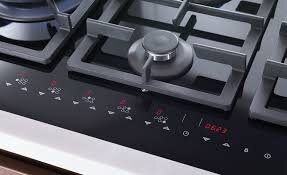
- Burners: The primary heat source, gas is released through small holes in the burner, mixing with air and igniting to produce a flame. Burners vary in size and heat output to accommodate various cooking tasks, from simmering to boiling.
- Ignition System: This system lights the gas to create a flame and includes three main types:
- Standing Pilot Lights: A small, continuously burning flame that ignites gas when the stove is turned on.
- Electronic Ignition: An energy-efficient system that uses a spark to ignite the gas upon turning the control knob.
- Continuous Ignition: Keeps the flame lit even if it briefly goes out, often using continuous sparks or flame detection.
- Control Panel: The control panel allows users to adjust various stove functions, including the stovetop, oven, broiler, and warming drawer. Depending on the stove design, this panel can be located on the front or back and may include features like an oven light button, digital clock, kitchen timer, control lock for safety, and self-cleaning functions in some models.
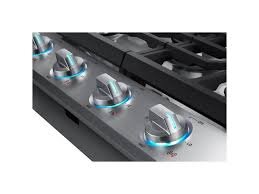
- Stovetop Elements: Characterized by open flames, gas stovetops utilize cast-iron grates that allow precise heat control. Many cooks prefer gas stoves for their responsiveness and efficiency.
- Oven Cavity: The large space for baking, roasting, and other cooking tasks. Gas ovens employ a similar ignition system as the stovetop but often include additional safety features like thermocouples to prevent leaks. Modern gas ovens may also feature advanced options like air frying, convection cooking, and multiple rack positions for versatility.
- Oven Racks: Metal shelves inside the oven that slide in and out, allowing users to bake multiple dishes simultaneously or adjust for larger pans. Some stoves come with maximum-capacity racks designed to support heavier dishes.
- Oven Vent: A small opening that allows heat and moisture to escape, ensuring even heat distribution within the oven. Keeping this vent clear is crucial for proper air circulation and consistent cooking results.
- Thermostat: This component regulates and monitors the oven’s internal temperature. It works with the control panel to display the temperature and maintain the correct heat for baking, roasting, or air frying.
- Gas Supply Line: This line connects the stove to your home’s gas source, delivering the necessary fuel for combustion. Proper installation and maintenance of the gas supply line are essential for safe operation.
- Ventilation System: Some gas stoves include a ventilation system that removes waste gases, such as carbon monoxide, from the kitchen. This system may consist of a flue, vent, or fan to ensure proper air circulation and safety.
Each of these components plays a vital role in the functionality, safety, and efficiency of a gas stove. Understanding these parts can help you choose the right appliance for your home and ensure that your stove operates effectively for years to come. If you need any further adjustments or additional information, just let me know!
How Burners Create Flames?
Burners on a gas stove create flames by mixing gas with air and igniting it. When you turn the control knob, pressurized gas flows through small holes in the burner, where it mixes with air. The ignition system then creates a small flame or electric spark at the burner, igniting the gas-air mixture. This process produces more giant open flames used for cooking, which can be adjusted in size to control the cooking temperature.
How the Ignition System Works?
The ignition system of a gas stove is crucial for lighting the burners and ensuring safe operation. There are three main types of ignition systems:
- Standing Pilot Lights:
- A standing pilot light is a small, continuously burning flame that always remains lit. When you turn on a burner, the gas flows through the burner ports and is ignited by this pilot light. This system is simple and reliable but can be less energy-efficient since the pilot light burns constantly.
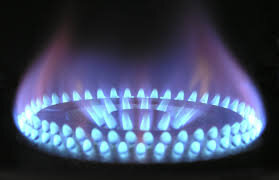
- Electronic Ignition:
- Electronic ignition systems use an electric spark to ignite the gas when the appliance is turned on. As you adjust the control knob, an electronic igniter generates a spark that ignites the gas-air mixture at the burner. This system is more energy-efficient than standing pilot lights because it only uses power when igniting the burner rather than keeping a constant flame burning.
- Continuous Ignition:
- Continuous ignition systems ensure the flame stays lit even if it is briefly extinguished. This system may use continuous sparks or a flame detection system to maintain ignition. If the flame goes out momentarily, the system quickly relights it to prevent gas from escaping, providing a consistent and safe cooking experience.
While electronic ignition and standing pilot lights are two methods of incandescent burners in natural gas appliances, the main difference lies in their operation: electronic ignition uses an electric spark to ignite the gas when the appliance is turned on. In contrast, a standing pilot light maintains a small, constant flame that ignites the gas continuously.
- How Oven Gas Supply and Ignition Works
The gas supply line delivers natural gas or propane to the stove in a gas oven through a control valve. As the user turns on the stove, an electric current flows to the igniter, heating it to a very high temperature. Once the igniter reaches the desired temperature, the oven safety valve opens the gas valve, allowing the igniter to light the gas burners inside the oven. This creates heat that radiates throughout the oven cavity. Safety features like thermocouples and flame sensors ensure the gas supply is shut off if the flame goes out, preventing leaks and ensuring safe operation.
- Why Lighting Burners Makes a “Pop” Sound
Lighting burners often make a “pop” sound due to a small, brief pressure change when the gas ignites. When you turn on the burner, gas begins to flow through the burner ports but may initially accumulate slightly before ignition. If ignition is delayed, the gas can continue to collect because it hasn’t ignited yet. Once the accrued gas finally touches a flame or spark, it ignites in a small explosion, creating a pop, boom, or bang you can hear. This noise is typically harmless and a byproduct of the rapid ignition process.
Why Switch to a Gas Stove?
Switching to a gas stove can provide numerous advantages for both cooking efficiency and overall kitchen performance. Here are some key benefits:
- Immediate and Precise Heat Control: Gas stoves allow for quick adjustments in temperature, providing a more responsive cooking experience. This enables chefs to maintain even cooking and achieve desired results with ease.
- Cost-Effectiveness: Gas stoves are often more cost-effective and energy-efficient compared to electric models. They provide instant heat, which can reduce cooking time and lower energy bills.
- Faster Heating: Gas burners heat up quickly, enabling faster cooking and reducing overall meal preparation time.
- Operation During Power Outages: Unlike electric stoves, gas stoves can function during power outages, making them a reliable option in emergency situations.
- Versatility: Gas stoves accommodate a wide range of cookware, allowing for diverse cooking methods. This versatility is favored by many chefs who appreciate the responsive heat.
Potentially Environmentally Friendly: While natural gas is a fossil fuel, it can be more environmentally friendly than some electricity sources, depending on your area’s energy mix. In some regions, natural gas has a lower carbon footprint than electricity generated from coal or oil.
| Pros | Cons |
| Immediate Heat Control | Installation Costs |
| Offers instant and precise control over heat levels. | It requires a gas line connection, which can involve additional costs if it still needs to be installed. |
| Even Cooking | Require Ventilation |
| Provides more even heat distribution, Which helps in cooking food more evenly | Proper ventilation is required to avoid the buildup of combustion gases and reduce air pollution. |
| Compatibility with Cookware | Higher Energy Costs |
| Gas stoves work with any type of cookware, including those incompatible with electric stoves. | In some areas, the cost of gas is higher than electricity. |
| Power outage independence | Environmental Impact |
| They function even during power outages, which can be convenient in emergencies. | Burning gas releases carbon dioxide and many pollutants, contributing to environmental issues. |
| Instant Heat and Cool Down | Installation complexity |
| Gas stoves heat and cool down quickly as compared to electric stoves. | Installation can be more complex and requires proper gas line connection. |
| Cost-Effective | Safety Concerns |
| Gas stoves have lower operating costs as compared to electric stoves. | Open flames and hot surfaces can pose safety risks, especially in households with children and pets. |
These are some tips that you must know before switching to gas stoves.
Average Life of a Gas Stove
The average lifespan of a gas stove is about 13 to 15 years. Gas stoves typically last longer than their electric counterparts, by 2 to 5 years. Good everyday care, such as cleaning the stove after each use, can help extend its useful life.
Top 8 Troubleshooting Common Gas Stove Issues
Here’s a brief overview of troubleshooting common gas stove issues:
- Burner Won’t Light: If the burner doesn’t ignite, it could be due to clogged burner ports, a misaligned burner cap, or a faulty igniter. Clean the ports, align the cap, and check the igniter for sparks.
- Weak or Uneven Flame: A weak or uneven flame often results from clogged burner ports or low gas pressure. Cleaning the burner and checking the gas valve can resolve this.
- Gas Odor: Smelling gas could indicate a leak or a loose connection. Turn off the stove, ventilate the area, and check connections. If the smell persists, contact a professional immediately.
- Pilot Light Won’t Stay Lit: If the pilot light won’t stay on, a dirty or faulty thermocouple is usually the culprit. Cleaning or repositioning the thermocouple might help, but replacement may be necessary.
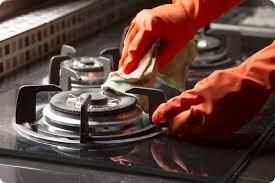
- Noisy Flame or Popping Sounds: A loud or popping flame often indicates a misaligned burner cap or excess air in the gas line. Realigning the cap and cleaning the burners can resolve this.
- Slow Cooking or Poor Heat: Slow heating can be caused by clogged burners or a faulty regulator. Cleaning the burners and checking the regulator can improve performance.
- Oven Doesn’t Heat Properly: If the oven isn’t heating well, it could be due to a faulty igniter, thermostat issues, or a blocked burner. Testing the igniter and cleaning the burner usually fixes this.
- Burner Flame is Too High or Low: An incorrectly adjusted air shutter or gas valve can cause the flame to be too high or low. Adjusting these settings should correct the flame height.
Regular maintenance and prompt attention to these issues can extend the life and efficiency of your gas stove.
Health Risks of Gas Stoves
While gas stoves are popular for their cooking efficiency and precision, they also come with significant health and safety concerns that homeowners should be aware of. Below are some of the key issues related to gas stove emissions and safety risks:
Air Quality and Respiratory Risks
Gas stoves emit nitrogen oxides (NOx), particularly nitrogen dioxide (NO2), which is a known respiratory irritant. Key concerns include:
- Respiratory Irritation: NO2 can trigger asthma and worsen respiratory conditions, particularly in sensitive individuals such as children and those with pre-existing health issues.
- Comparative Emissions: The emissions from gas stoves are similar to those produced by cars, boats, and other combustion engines, contributing to indoor air pollution.
- Long-term Exposure: Prolonged exposure to elevated levels of NO2, even at low concentrations, has been linked to reduced lung function and increased sensitivity to allergens.
- Other Harmful Emissions: The combustion of natural gas also releases carbon monoxide (CO) and particulate matter, both of which can exacerbate respiratory conditions and heighten the risk of respiratory infections.
- Poor Ventilation: Lack of adequate ventilation can further deteriorate indoor air quality, leading to symptoms such as headaches, dizziness, and, in severe cases, carbon monoxide poisoning.
Safety Risks
In addition to health risks, gas stoves can pose serious safety hazards:
- Gas Leaks: Improper use or maintenance of gas stoves can lead to gas leaks, which pose severe health and safety risks. Gas leaks can result in fires or explosions if not detected and addressed promptly.
- Need for Ventilation: Proper ventilation is essential to mitigate these risks. Ensuring good airflow in the kitchen can help disperse harmful emissions and improve overall indoor air quality.
- Regular Maintenance: Conducting regular maintenance and inspections is crucial to minimize the risks associated with gas stoves. This includes checking for leaks, ensuring proper ventilation, and cleaning burners to maintain efficiency and safety.
Should Gas Stoves Be Regulated? And If So, How?
Yes, gas stoves should be regulated. Here, I will let you know how it’s possible;
- Emissions Standards: Set limits on nitrogen oxides and carbon monoxide emissions.
- Ventilation Requirements: Mandate proper ventilation systems, like range hoods vented outdoors.
- Public Awareness: Educate consumers on health risks and safe practices.
- Incentives for Alternatives: Offer rebates or tax credits for switching to electric or induction stoves.
- Safety Inspections: Require regular maintenance and safety checks.
- Product Labeling: Implement labeling to inform consumers about emissions and efficiency.
Why People Use Gas Stoves?
As you know, some people have a question about why people are switching to gas stoves. I will tell you that people use gas stoves for several reasons:
- Quick Temperature Changes: Gas stoves heat up and cool down quickly, allowing for faster cooking and adjustments and putting food on the table sooner.
- Better Temperature Control: The open flame provides precise control over cooking temperatures, which is less frustrating than electric stoves’ slower response.
- Versatile Cooking: Gas stoves are compatible with all cookware, even uneven ones, and allow for cooking methods like charring, which electric stoves can’t offer.
- Easier to Clean: Gas stoves cool down faster and have removable grates, making them easier to clean than electric stoves, which often require special cleaning agents.
- More Affordable: If gas lines are already installed, gas stoves are generally cheaper to operate and can lower energy bills compared to electric stoves.
Top 8 Features Before Choosing the Best Gas Stove
Choosing the best gas stove involves considering several key factors:
- Burner Power and Efficiency: Look for burners with varying power levels to handle different cooking needs, from simmering to high-heat searing.
- Heat Distribution: Ensure the stove provides even heat distribution to avoid hot spots and cook food more uniformly.
- Ignition System: Choose between electric ignition for convenience or manual ignition for simplicity.
- Ease of Cleaning: Opt for removable grates and sealed burners for easier cleaning.
- Safety Features: Consider models with flame failure protection and automatic shut-off to prevent accidents.
- Size and Fit: Ensure the stove fits your kitchen space and suits your cooking needs, whether in a small apartment or a large kitchen.
- Design and Features: Look for additional features, such as built-in timers, oven compartments, or griddle options, to enhance functionality.
- Brand and Warranty: Choose reputable brands with good reviews and warranties for reliable performance and support.
You Can Also Read: How To Choose The Right Gas Cooktop For Your Kitchen?
Conclusion
Gas stoves are famous for their ability to provide quick and precise temperature control, even heat distribution, and versatility in cooking. They are generally more cost-effective and energy-efficient than electric stoves, particularly in homes with existing gas lines. Their open flame allows for various cooking techniques and offers immediate heat adjustments, which many chefs and home cooks find advantageous.
However, gas stoves have drawbacks, including potential health risks from emitted gases, the need for proper ventilation, and safety concerns related to gas leaks and open flames. Regular maintenance and adherence to safety protocols are essential to mitigate these risks.
When choosing a gas stove, consider factors such as burner power, heat distribution, ignition systems, ease of cleaning, and safety features. Ensuring the stove fits your kitchen space and meets your cooking needs will help you make the most informed decision.
Regulating gas stoves through stricter emissions standards, improved ventilation requirements, and public awareness can further enhance their safety and efficiency.
FAQs
Are gas stoves being banned?
Some cities are restricting gas stoves in new buildings, but existing homes can still use them. Manufacturers are introducing low-emission models to address environmental concerns.
What type of gas is used for gas stoves?
Most gas stoves use natural gas. However, they can also run on propane with a conversion kit.
Can I use gas stoves during a power outage?
Yes, gas stoves work during power outages, but the electronic ignition may require a match to ignite.
Do gas stoves need ventilation?
Yes, proper ventilation is recommended to reduce indoor pollutants like nitrogen dioxide. Use a range hood or open windows while cooking.
How often should gas stoves be serviced?
Annual maintenance is recommended to inspect gas lines, regulators, and burners to ensure safe operation.

